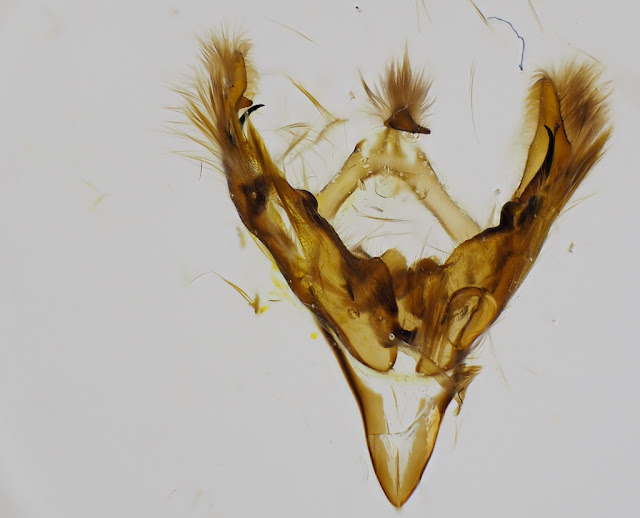I was in Kirkwall the other day and remembering that the bird food was low, and fancying getting a decent thing in the garden before we leave, I splashed out on some Nyjer (quite expensive to purchase here) and some black sunflower seeds. Target species was Hawfinch as I haven't had a poser of one in the garden for a while. I was not expecting this though...
 |
| Great Tit, Parus major. possibly of the continental race P. m. major. Female. |
The bill on this bird looks quite stout, but it is quite yellow on the nape, so maybe of the continental subspecies. I believe this is a bit of a subjective ID usually.
There have been a few around this year, on Shapinsay and one the other day in Toab, it is annual here with two or three records most years, but has proved to be elusive for me, and no hint of one on the patch until today. Certainly this was highest on the wish list for the home patch, with Med Gull running a close second. Oddly, arguably the commonest Parus species in Orkney, Coal Tit is the one that has not occurred on the patch.
I have also had a mega moth in the last few days when I finally proved Agonopterix ciliella. This has been a bit of a mission and I've been dissecting these things for a while. Not every dissection was successful, females are hard to dissect, but arguably easier to determine. Anyway, here's the beast. Trapped on the night of 8th April, when I caught 53 moths of five species (three light traps and one Common Quaker in a pheromone trap to LEEK).
 |
| Agonopterix ciliella, male. |
 |
| Aedaegus. |
 |
| The distal processes of the sacculi (the darker sticky-up bits) are clearly twisted on their vertical axis, bingo! |
A big effort to get this species, and prove it actually occurs here. I believe the caterpillars are seperable in the field.
While I was at it I dissected this as well:
 |
| Orthosia incerta, Clouded Drab |
I thought this moth was Clouded Drab, but I was not certain. The dissection proves the id, the aedaegus being distinctive for a start.
As well as the trapping session I went for a wander with tubes and looked in the troughs, mostly re-purposed baths, and turned over a stone or two. This led to a day of peering down the microscope and photographing the bits. Mostly I caught things that I know quite well, or at least had a good idea of. But I'm out of practice with Staphylinids and spent ages on a Xanthrolinus linearis before I went back to basics and keyed it again from the beginning and found the error I was making.
 |
| Xanthrolinus linearis note to self, remember to check that the elytra don't overlap... |
...as that's an important path division in the key.
The most interesting things I found were a couple more Dolerus sawflies, which I haven't even started on. And this Bibio, which I didn't recognise. The flies wouldn't key out with the simple Highland key, so I downloaded the RES key. It took a while but eventually I was happy that I had three female Bibio johannis, which I have recorded here previously. They are extraordinary looking things.
 |
| Bibio johannis, female. Huge hump of a thorax, massive swollen front tibia with enormous spurs, tiny head, very odd. |
I'd walked out with the EMP pheromone attached to me in one of those Tesco veg bags, ideal for the purpose. I saw an Emperor Moth as I walked out of the door and then had ten or eleven more sightings of perhaps five or more different moths over the next two hours. No photos of course as they rocketed by and around hunting for the source of the chemical cocktail.
Other birds have included good numbers of Black-tailed Godwits on The Shunan, now perfect for waders since the ditch cleaning out by the farm. Record numbers of Redshank for the same reason. Lots of Pink-feet going through and lingering. A Peregrine has paid a couple of visits, a species that has been scarce here in the last few years. Out on the coast a Wheatear was an expected, but welcome sight. Today, there was a hybrid crow, as well as a smart male Brambling and the Great Tit highlight.








2 comments:
Congratulations! We're distraught that you're leaving the county, but quite excited to see what you turn up on the mainland 😊
Thank you Graeme. The blog will continue, so I'll be reporting on what I find. It's a fabulous area with some really interesting, and rather different from Orkney, habo. I suspect I'll be overwhelmed with all sorts of species that I struggle to identify. (No doubt I'll be requiring your Odo expertise from time to time.) There are still specimens in my notorious fridge that are unidentified for here, so no doubt the odd post on some historical stuff also.
Post a Comment